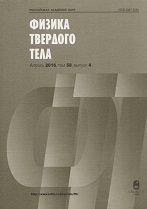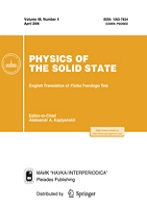|
This article is cited in 5 scientific papers (total in 5 papers)
Low dimensional systems
Mössbauer studies of composites hydroxyapatite/ferroxides
A. S. Kamzina, N. Wakiyabc
a Ioffe Institute, St. Petersburg
b Department of Electronics and Materials Science, Shizuoka University,
Naka-ku, Hamamatsu, Japan
c Research Institute of Electronics, Shizuoka University, Hamamatsu, Japan
Abstract:
Magnetic composite (MC) particles consisting of finding hydroxyapatite and iron oxides (HAp/FeOxid), synthesized at both pyrolysis temperatures during MC synthesis, i.e., 800, 900, and 1000$^{\circ}$C and at the various ferroxide concentrations in the HАp : FeOxid composite, i.e., 1 : 3, 1 : 2, and 1 : 1 (at a pyrolysis temperature of 1000$^{\circ}$C). It is found that the HAp/FeOxid MCs are formed by the hydroxyapatite matrix providing biological compatibility of the MC containing iron oxide particles. Mössbauer studies show that maghemite ($\gamma$-Fe$_2$O$_3$), magnetite (Fe$_2$O$_3$), $\varepsilon$-Fe$_2$O$_3$, and akaganeite ($\beta$-FeOOH) phases are simultaneously observed in synthesized HAp/FeOxid MCs. The content of $\varepsilon$-Fe$_2$O$_3$ component having giant magnetic anisotropy is to $\sim$40% of iron oxides (FeOxid) in HAp/FeOxid MCs, which makes obtained MCs very promising for various applications, including biomedical ones.
Received: 10.05.2018
Citation:
A. S. Kamzin, N. Wakiya, “Mössbauer studies of composites hydroxyapatite/ferroxides”, Fizika Tverdogo Tela, 60:12 (2018), 2429–2436; Phys. Solid State, 60:12 (2018), 2608–2615
Linking options:
https://www.mathnet.ru/eng/ftt8984 https://www.mathnet.ru/eng/ftt/v60/i12/p2429
|


| Statistics & downloads: |
| Abstract page: | 67 | | Full-text PDF : | 16 |
|





 Contact us:
Contact us: Terms of Use
Terms of Use
 Registration to the website
Registration to the website Logotypes
Logotypes









 Citation in format
Citation in format 
